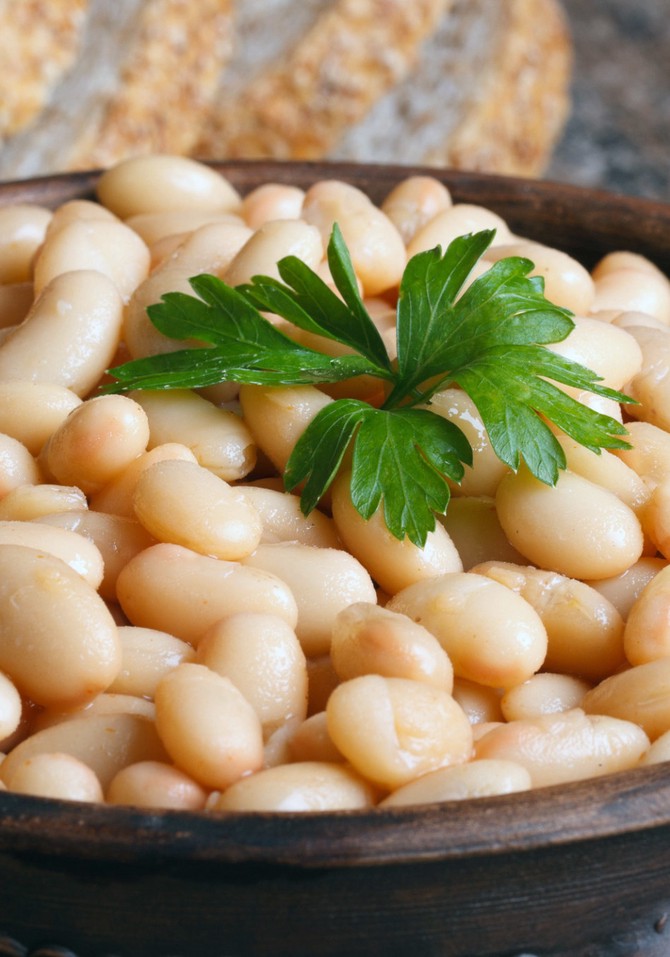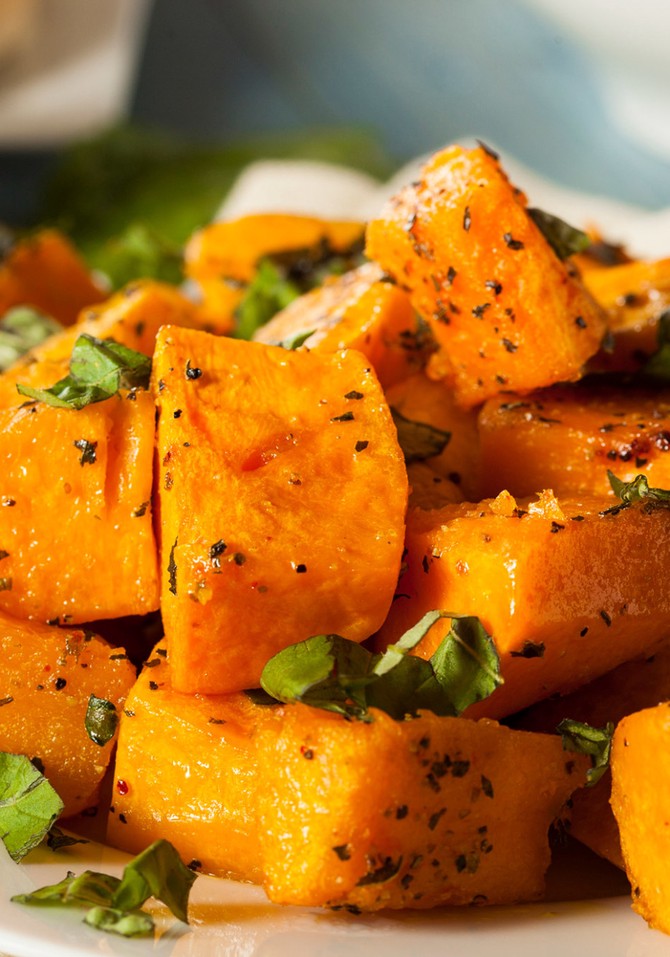Seasonal Superfoods That Add a Healthy Boost to Winter Meals
Now's the time to swap out your go-to produce for these seasonal health heroes.
By Jessica Migala

Photo: ALLEKO/iStock
If you like black beans, try white beans.
Why they're so good for you
White beans are better than black in terms of digestion-promoting fiber and rich in bone-building calcium. Plus, thanks to their mild, go-with-anything savory flavor, white beans are a little more versatile, working with rice and soups as well as meat and vegetables.
How to enjoy
Registered dietitian Michelle Babb's favorite side: Mix white beans, cooked red rice, roasted butternut squash and kale, then toss with pesto.
No time to cook? In the Creamy Parmesan Pasta from Oprah's new O, That's Good! line of soups and sides, white beans replace some of the cream in the rich, velvety sauce.

Photo: bhofack2/iStock
If you like sweet potatoes, try butternut squash.
Why it's so good for you
Both are excellent sources of vitamins A and C, nutrients that keep your immune system in cold- and flu-fighting shape, says Babb, author of Anti-Inflammatory Eating for a Happy, Healthy Brain. But squash has less than half the calories.
How to enjoy
Roasting gives squash a caramelized sweetness, says registered dietitian and chef Jessica Swift. Cube and toss with oil, then roast at 400 degrees for 30 minutes. Mix with pomegranate seeds, chopped scallion, lemon zest, crushed pistachios and a drizzle of balsamic vinegar.

Photo: gresei/iStock
If you like peaches, try persimmons.
Why they're so good for you
Two small persimmons supply 19 percent of your recommended dietary allowance for vitamin A—almost five times more than a peach—plus six grams of fiber. Two in season now: Hachiya, which resembles an acorn, and the tomato-shaped Fuyu.
How to enjoy
When Fuyus are starting to ripen, they'll be sweetly tart and crisp, says Swift. You can snack on them straight or slice them into wedges, dollop with goat cheese and wrap in prosciutto. Or sauté them and arrange over arugula with a handful of pecans.

Photo: Denira777/iStock
If you like spinach, try curly kale.
Why it's so good for you
Kale bests spinach when it comes to vitamin K, which plays a key role in blood clotting and bone health. It also contains detoxifying compounds that may protect against certain cancers, says Babb.
How to enjoy
This tough, slightly bitter leaf can make for quite a mouthful when eaten raw, especially if you skip a crucial prep step: Before using in salads or sides, massage kale with olive oil and sprinkle with salt. This tenderizes and flavors the leaves—and helps them crisp up when you're baking chips.

Photo: eekis/iStock
If you like potatoes, try celery root (a.k.a. celeriac).
Why it's so good for you
Compared with a 134-calorie cup of potatoes, a cup of celery root has just 42 calories—and a third of the carbs, says Swift. And celery root is a superior source of phosphorus, a mineral that helps keep your skeleton strong.
How to enjoy
With its distinctive peppery flavor, celery root mash has more zip than mashed potatoes. Swift suggests peeling celery root and cutting it into chunks, then steaming until soft. Mash and add Greek yogurt, shredded Gruyère and Parmesan cheeses and salt to taste.
From the December 2017 issue of O, The Oprah Magazine

